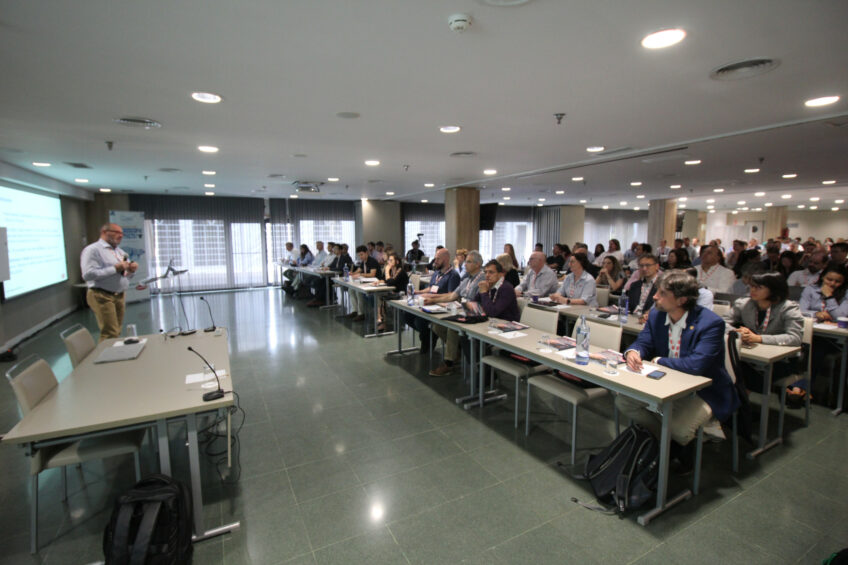Review: Unravelling yeast’s mode of action, one step at a time

It is well-known that yeast and yeast derivatives can be beneficial to pigs of any age. But how exactly is a question that keeps researchers and the surrounding pig nutrition industry occupied and puzzled. As time and science progress, bit by bit pieces of the puzzle seem to fit. Madrid, Spain was the venue for an update, on June 19.
It has become a tradition within Lallemand Animal Nutrition. Once every so often, the globally operating yeast producer is inviting nutritionists and pig experts from around the globe to gather and learn about the latest advancements in its research. The company tends to invest substantial amounts of money and efforts in research – often in cooperation with researcher institutes across the planet – and from time to time, relevant contacts are updated about new insights.
It has been known for many years that adding yeast and yeast derivatives to pig nutrition is beneficial for pigs. In a way, that is not entirely surprising. After all, yeast is most likely part of the diet of their distant cousins in the wild, coming across fungal species from time to time when eating a fermenting apple or nibbling on a carcass.
What has been fascinating Lallemand as yeast producer, is exactly how yeast could be beneficial. After all, yeast products are not like antibiotics, where the mode of action of a compound can easily be demonstrated – it kills bacteria, period. Yeast, on the other hand, is more subtle, and often works via a detour, having indirect effects, some of which only get unravelled bit by bit. Yet as both time and techniques in science progress, the modes of action of yeast gradually reveal themselves.
It had been a good few years since the last Swine Technical Meeting (2019), so on the menu of the 2024 edition in Madrid, Spain, on June 19, were a lot of updates. The result was an intensive session with a wide variety of technical presentations. The review below focuses on the shared insights of different yeast applications in various pig types.

Yeast and sows (and piglets)
Fernando Bravo de Laguna is swine R&D project leader of Lallemand. His presentation revolved around a well-known and well-researched concept within the world of yeast – feeding the sow to make sure they will convey positive effects to their offspring, in other words “maternal imprinting.”
Supplementation to sow diets of the probiotic live yeast Saccharomyces cerevisiae boulardii CNCM I-1079 (marketed as Levucell SB) would lead to more robust piglets at weaning, he said, through a range of different modes of action. He zoomed in on 3 aspects:
- Piglet quality, i.e. piglets being more vital and having a better growth performance;
- Microbiota composition, as its composition is affected both pre- and post-weaning; and
- Immune response is modulated, for instance how the lungs respond to inflammatory processes.
As for the “why” behind this all, he pointed to this type of yeast leading to a reduction of stress, an increased concentration of immunoglobulin G (IgG) in the colostrum and he also briefly touched on the gut-lung-axis, not the only “axis” to be introduced during the meeting.

Yeast and pre-weaning piglets
A different axis that received attention followed in the presentation of Ignacio Ipharaguerre, senior scientist at the University of Kiel, Germany. He spoke of the “gut-liver-axis” – and this came up in the context of the function of bile acids, judging by the response of the audience not an everyday subject in the world of nutrition. Bile acids, in short, are produced from cholesterol in the liver, and have all kinds of effects on digestion.
He said that feeding the aforementioned yeast strain (S. boulardii) had been observed to have several effects on the functioning of bile acids. Hence he closed off with the question asking whether or not “perinatal imprinting could be an intervention target?”

Yeast and weaner pigs
On it went to weaner pigs in a clear presentation by Bruno Bertaud, technical manager, yeast derivatives and swine solutions at Lallemand. He concentrated on beneficial effects of hydrolysed yeast – a process in which yeast cells are digested by selected exogenous enzymes, fragmenting proteins and acids into very small (and digestible) peptides. He described this as a functional feed ingredient (marketed as Yela Prosecure). He presented outcomes of trials in which it was used to partially replace soybean meal, and totally replace fishmeal or blood plasma.

The use of yeast in antibiotic-free diets for weaner was discussed by Lallemand’s David Saornil. He summarised a presentation that ought to have been given by Prof Shiyan Qiao of China Agricultural University. Key message after having conducted 3 experiments: a combination of the aforementioned S. boulardii in combination with inactivated yeast fractions (marketed as Yang), which could enhance the resistance of piglets against an enterotoxigenic E. coli infection. That happened by e.g. improving the intestinal barrier function, modifying the composition of gut microbiota and regulating inflammatory responses.

Yeast and finishing pigs
Two speakers addressed the use of yeast products in finishing pigs. Dr Aira Serviento is post-doctoral researcher at the Federal Institute of Technology in Zürich, known in Switzerland as ETH Zürich.. During her PhD work, she zoomed in on a particular type of finishing pigs, being the ones that are suffering from heat stress.
Her aim was to see if earlier reported research could be replicated – this was that feeding live yeast (S. boulardii) to finishers helped mitigating the effect of heat stress in pigs. Knowing that finisher pigs suffer the most from heat stress during and straight after a meal, she tried to test it by increasing the feed frequency. The outcomes of that formed somewhat of a mixed message. Yes, she said, “Imposing an increased meal frequency improved feed intake in heat stressed pigs with a positive impact on energy retention.” She also showed that supplementing pigs with live yeast improved insulin sensitivity and modified, as a consequence, the pig feeding behaviour in favour of a better adaptation to heat stress.

Pierre Lebreton, global category manager monogastrics at Lallemand, summarised research. He pointed to one proven consequence of the use of S. boulardii in finisher pigs is that of an improvement of energy retention.
Other speakers at this edition of the International Swine Meeting included veterinarian Alberto Morillo, Spain; Luis Sanjoaquín, swine veterinarian advisor, Spain; and Prof Walter Gerrits, Wageningen UR, the Netherlands.











